on How to Build an Empire
 |


Halloween Issue!
Tracks-013, Issue #13 -- Model Railroading Newsletter
October, 2020

Building Your Model Railroad:
Tips, Techniques and Information
for All Ages and All Gauges
Tracks Newsletter -October, 2020
Halloween Edition
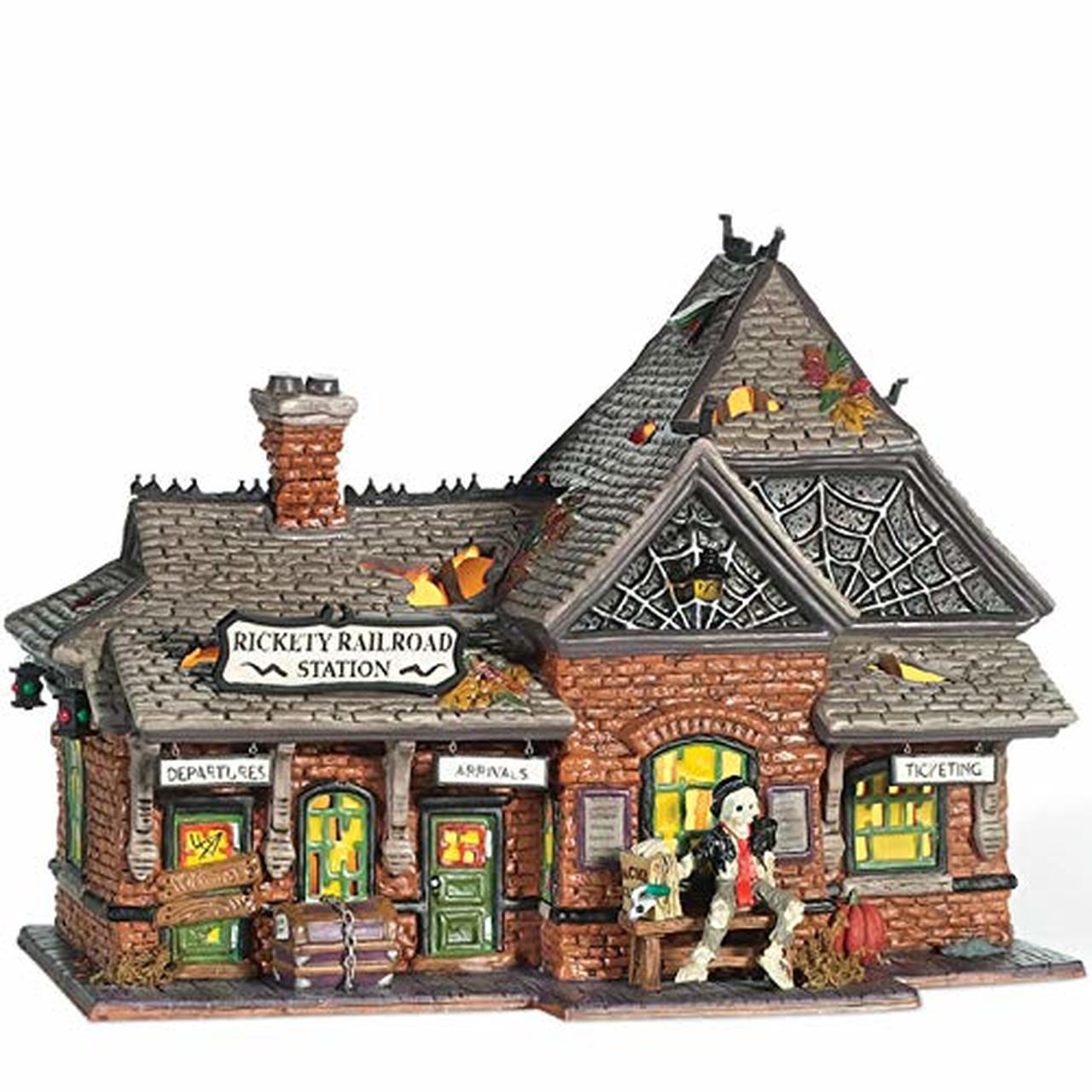 √ Rickety Railroad Station: a railroad figurine celebrating Halloween!
√ Rickety Railroad Station: a railroad figurine celebrating Halloween!Articles in This Issue:
Make Your Own Halloween Layout
Designing Switching Layouts - a Book Review
Utility System for Your Layout
Advice on Trucks to Avoid Derailments
- Shorty Parker's HO Scale Layout Tour
- Amazing Layout on a Hollow Core Door
- John Parker's BNSF HO Railroad - Fall River Division
- Burlington Northern Switching Layout Industry & Yard Overview
- 10% Discount at the Hobby Central Train Station
WELCOME to the October, 2020 issue of Tracks - a monthly newsletter published by Building Your Model Railroad, devoted to providing breaking news and tips to model railroaders of all ages and all gauges in a quick and easy-to-read format. Resources are always credited where appropriate.
Whitelisting the email address of this newsletter is important. It assures that it doesn't end up in your Junk or Trash box every month. Please right click on the email address of the sender, copy the link and then go to your contacts program and paste it there as a new contact. You only have to do it once.
Note: √= sponsored link - See disclosure page for details. If you see a √ next to a link on this page or on the BYMRR.com site, that signals that the link is an ad. So if you click on it and purchase something, I might get a small (very small, I might add) commission on it. Just so you know.
Requests: If there are any particular subjects that you would like to see in the newsletter, please let us know at [email protected]. Even better, if you have a tip or something you would like to add to the newsletter, please send it in! Use the form in the Comments section of the BYMRR website.
Back Issues: And don't forget, there is a huge amount of information in the 33 issues of the old newsletter called BYMR-Zine as well as previous issues of Tracks. Back Issues are available here.
Thank you for subscribing. We have lots of new tips and tricks in this issue to add to your model railroading pleasure. And please tell your friends about us. The more we can spread the word about model railroading, the better.
Photos: We're always looking for new photos for our Gallery pages. If you have photos of your layout that you would like to share with other model railroaders, I'd love to post them on the site. Send them in to [email protected].
Contributions Encouraged: If you have a tip, picture, video or an article about model railroading that you would like to share in this newsletter, please let me know. I'm always looking for more information.
Make Your Own Halloween Layout
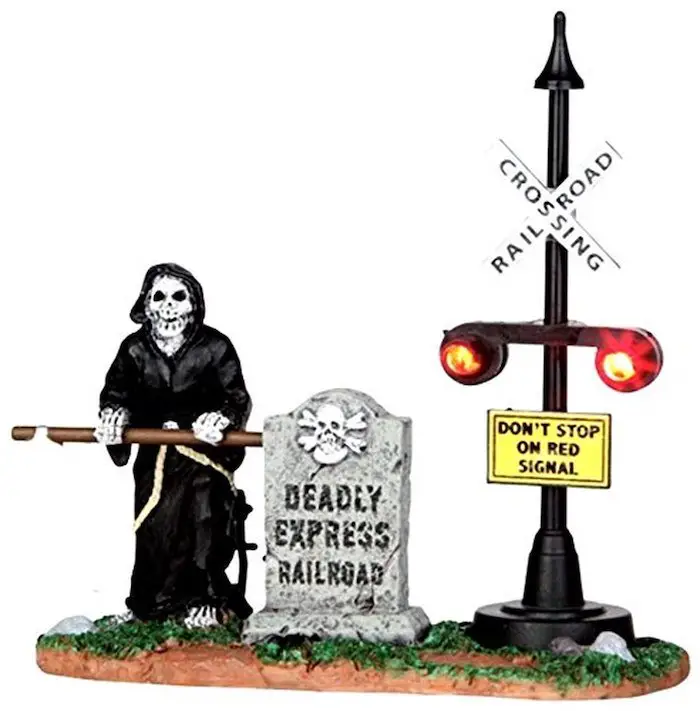 Halloween Deadly Express Railroad Crossing
Halloween Deadly Express Railroad CrossingIt's that time of year again where the spooks and goblins rule the night, and having fun becomes our primary motivation. Despite the holiday being perhaps subdued a little by the pandemic, we can still find ways to enjoy it. One of the best things I can think of to do this season, being the ferric equestrian that I am, is to create a Halloween railroad layout! I can envision it now - a spooky train on a dark night carrying hopper loads of Halloween candy from one station to another picking up ghoulish passengers along the way, conductors selling tickets to the fiery depths of Hades, the Grim Reaper encouraging unwary suspects to cross the tracks while the red flashing light is on - all under the atmosphere of eerie orange and black lighting.
Or, you can use your current layout and spruce it up with a Halloween train, a cemetary, a few spooky looking trees and lit-up haunted houses, again with spooky lighting and scary sounds in the background.
If you're not able to have the kids come to visit this year, set it all up and take some spooky videos or show it to them on Facetime. It will definitely be a memory that will stick with them every time this holiday rolls around again.
Some of these items are not all that easy to find, so I went searching far and wide outside of my usual haunts to find a few things that might add to the fun. Check out the Halloween pages that we put together for the Hobby Central Train Station.
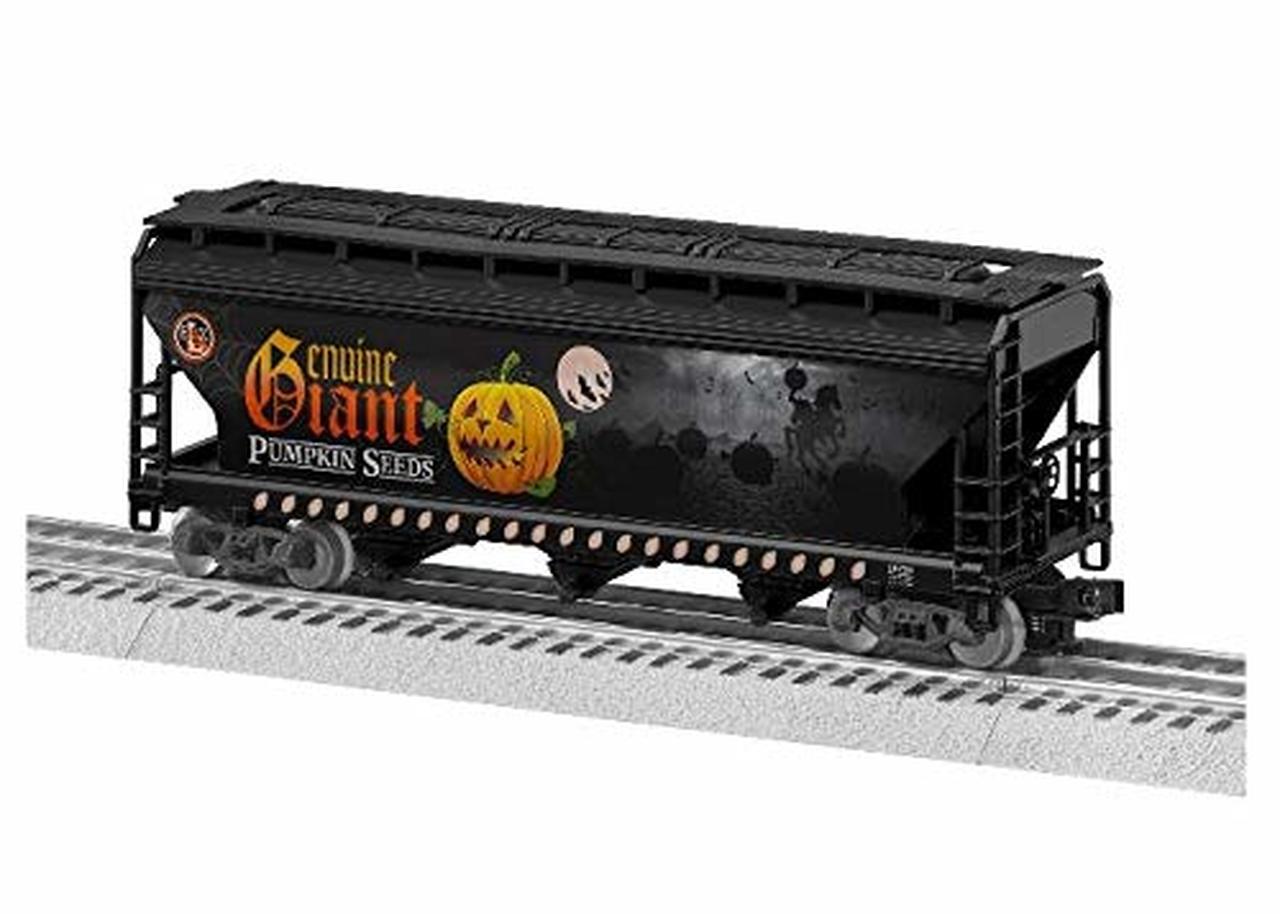 Halloween O Gauge Hopper
Halloween O Gauge Hopper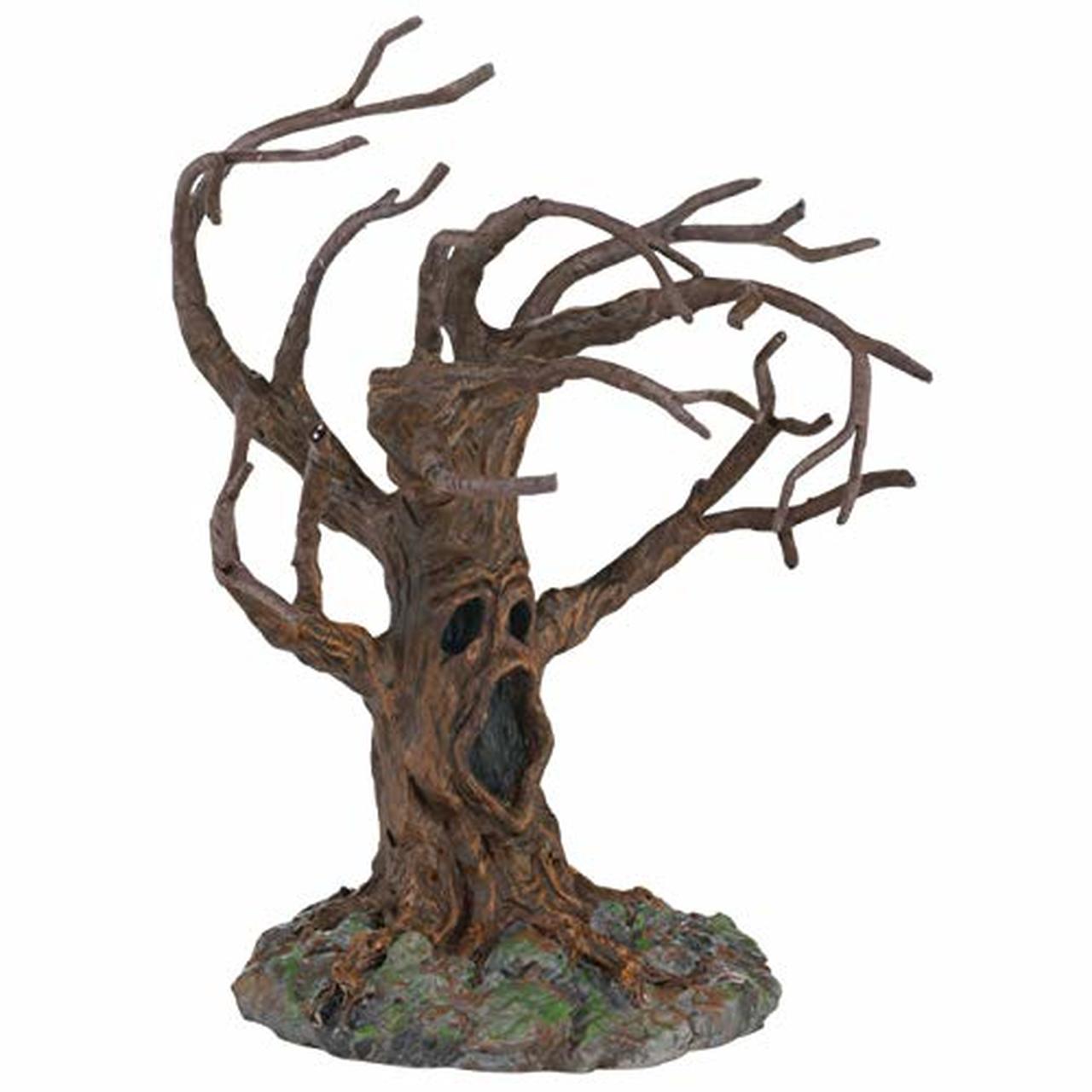 Halloween Spooky Tree
Halloween Spooky TreeModel Railroading on a Budget
Model railroading can be an expensive hobby. You have to learn how to cut the costs down as much as possible. The one thing not to skimp on is having locomotives that work well. Perhaps the second thing is to have good track and turnouts (non-remote). Beyond that, you can fix, make or buy inexpensively almost anything else.
Avoid buying pre-assembled, built-up structures. Instead, buy plastic kits or plain styrene or cardstock for your structures and learn how to kitbash or scratch build them into unique buildings for your layout.
Look around you for things you can use – like cutting liter soda bottles in half to make the insides of tunnels, using toilet paper rolls for making silos and grain elevators.
Use inexpensive speaker wire for wiring track feeders and lights.
Use an old CD player for sound effects. Find free train sounds online and burn them to a CD.
Inexpensive strings of fairy lights are great for inside passenger cars or buildings.
Use twigs from your backyard bushes or cones from your pines to make trees. Go to your local craft store for bundles of sage, baby’s breath and other tree-like craft material to make large numbers of different kinds of trees. Or use clumps of polyfiber –spray-painted and covered with ground foam - to make large forests.
Sheets of green moss can be purchased inexpensively from craft stores or garden stores. These can be used as ground cover for large forests or mountains.
Start with DC, which is less expensive than DCC. You can always move to DCC later – Just make sure the DC locomotives you buy now are DCC-ready. Even if they are not DCC-ready, they can be converted to DCC later - It's just a little more difficult.
Use pine bark mulch stacked up and glued for retaining walls. Or use old cork or ceiling tile stacked up, broken edges forward.
You can use sawdust, sifted dirt, coal-dust or kitty litter for ground cover or ballast.
Use small stones from your gravel driveway for talus.
Use inexpensive Sculptamold to make ground goop and to make rock outcroppings.
Some people like to use shoe polish to paint railroad ties – If you do, don’t mix any alcohol with your glue when you add ballast. The shoe polish will run.
Use paper models for structures. Use software made by Evans Designs to print sheets of brick or stone that can be used for structures or retaining walls.
Save the Styrofoam packing that can be cut up into sheets or box shapes. These can be used to build structures, tunnels, and bridges or used as filler under plaster-cloth terrain. Or you can use them to create an elevated area for a town.
Toothbrush bristles can be used as icicles.
Use paint and high gloss varnish for water areas.
Inexpensive chalk dust can be used for weathering or coloring wood structures. Lichen skewered with brown-painted toothpicks make great bushes for hillsides.
Paint your backdrop using a combination of blue and white paint – bluer on top, lighter near the horizon.
Use old or inexpensive aluminum flashing for rocks, cliffs or mountains.
Use aluminum foil instead of purchasing rock molds for making rocks.
Use plastic sheets and transparent silicone gel for waterfalls.
Use the BYMRR.com site for free information instead of buying books or going to expensive conventions.
Always be looking for inexpensive or free things you can use for your layout. Don’t be afraid to use your imagination and creativity to make something out of nothing. And when you do, let us know, so we can share it with others.
(Updated and reprinted from BYMRR-Zine, August, 2011, with permission)
Book Review: How to Design a Small Switching Layout
by Lance Mindheim
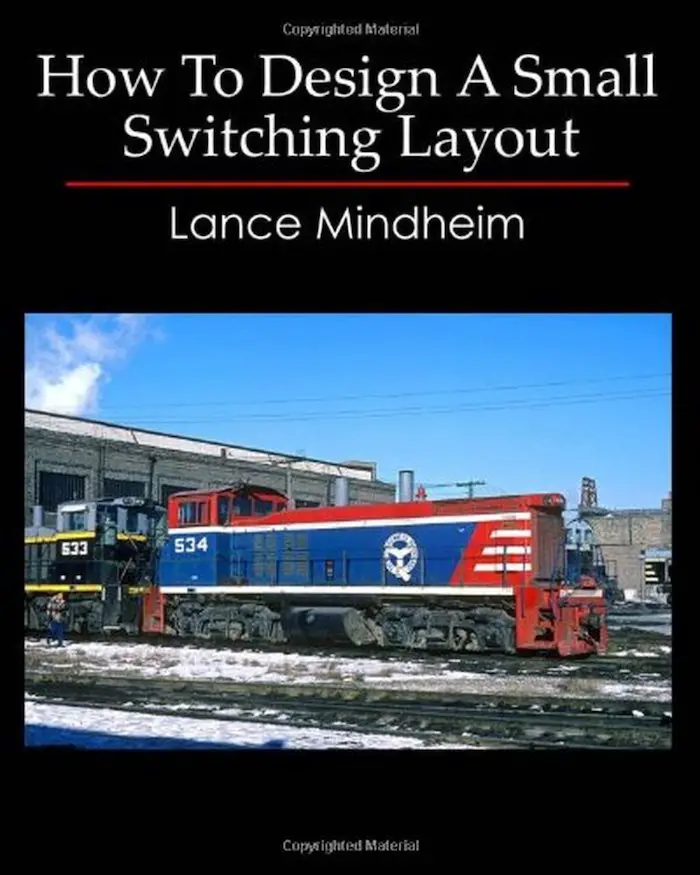
Lance has once again presented us with a well-written, well-organized, informative and educational book on layout design. This one in particular is a subject that many model railroaders like to read about, since space for many of us is often very limited. Small layouts are great for many reasons, not just because they don't take up as much space. They also don't take as much time to build. They are a lot of fun to design but also to operate. Switching layouts are sometimes like puzzles. You have to figure out how to get a loaded car from one corner of the layout to the other with no direct path and without touching anything except for the throttle or controller.
The book starts out by telling us that before we even put pencil to paper, we have to make some decisions about what would provide us with the most enjoyment within limited circumstances. The most common problem that we create for ourselves is to try to do too much. We try to cram more track and structures into the layout than what it can reasonably support. Then we skimp on scenery, which ideally should take up at least a third of the space.
Lance also explains how larger structures can be suggested or presumed to be present even if they are not fully there. One flat relief section of a warehouse can have 4 doors - each of which belongs to a different business and each of which can be a drop-off point for loaded railcars. This is called space efficiency. A 16 inch wide shelf can provide enough space in HO scale for two tracks separated by a creek and some scenery and still have enough room for industries in the back, which is plenty for one scene. More than that would be an overload of meaningless stuff.
There is a fairly substantial section on laying track properly for the best results - like only using number 6 turnouts and not using a curve radius less than 24 inches, separating parallel tracks by 2 inches for straight tracks and 2 3/8 inches on curves. The text and drawings on how to develop classification and staging yards are excellent and well-explained. He shows how crossings are more "track efficient" than switchbacks. He also demonstrates how to put a run-around track outside the yard, rather than within it for better function and efficiency.
Overall, the book is very informative and would definitely serve you well as an excellent resource if you are planning any type of small layout.
Utility System for Your Layout
Every now and then I look at my layout and I see a few telephone poles that I have placed along tracks or roadways, and I think how unrealistic they are. I think, "Someday, maybe I should string some 'power lines' across those poles to at least give the appearance that they have a purpose. Then I think about the work involved in that and quickly say, "Nah!"
However, soon, we will have the ability to put up those utility lines for the ultimate in realism, quickly and easily. Woodland Scenics (Why am I not surprised?) is creating pre-wired, tangle-free power and communication lines on poles that you can install on your layout in minutes!. These will be available in N, HO and O scales.
Check it out on their website... https://woodlandscenics.woodlandscenics.com/show/item/US2266
DigiTrax Goes WiFi
√
Now you can use your Apple or Android device to wirelessly connect to your Digitrax Loconet system using the LNWI Wifi Interface. All you need is a supported throttle app on your device to connect. The interface is capable of connecting up to four devices. Talk about walkaround throttles... This is revolutionary!
See it at www.digitrax.com/throttleapps/
New Powered Rerailer from Bachmann
The smaller the trains are and the older my hands and eyes get, the more difficult it is to get the trains on the tracks. Here is a great new tool from Bachmann that will reduce the frequency of expletives everywhere in the model railroad world...
Derailment-prone Trucks
Here is some excellent advice from Joe Fugate on how to look for truck problems on your rolling stock that are likely to cause derailments...
More Great Videos:
(I apologize for the ads in some of these videos, but they are not mine and I can't seem to get rid of them. Nevertheless, the videos are awesome and well-worth your time.)Shorty Parker's HO Scale Layout Tour
Amazing Layout on a Hollow Core Door
John Parker's BNSF HO Railroad - Fall River Division
Burlington Northern Switching Layout Industry & Yard Overview
Since one of the articles in this issue of Tracks is about how to design a small switching layout, I thought it would be nice to show a video of one such layout already designed and built to give you an idea of what can be done in a relatively small space...
Small Shelf Layout
Here is another example of a switching layout in a much smaller space...
Hobby Central Train Station
Check out our Hobby Central Train Station for all your train supplies - everything you need to build your own model railroad. (Also available: RC cars, trucks, planes, helicopters, games, puzzles, tools, gifts and much more.
- FREE SHIPPING.
- Competitive pricing.
- FREE DVD with every order over $50.00.
- Also get a one-time 10% discount just because you read this newsletter. Use the secret Coupon Code XEZ3Z27W7W6EL at checkout. (Only good during October 2020)
Hope you enjoyed this issue of Tracks. Feel free to pass it on to your friends, family and other model railroaders. If you have a great tip or article that you would like to publish on the website, please let me know - The more, the better. Any comments or suggestions are always welcome. You can either go to the Comments/Contact Page and enter your suggestions there or contact me directly at [email protected]
Thank you for your support and for subscribing to the free newsletter for Building Your Model Railroad.
And, as always, thank you for visiting the BYMRR website at
https://www.bymrr.com. We are committed to providing all the newest techniques, tips and articles to help YOU build your own great model railroad!
Take care and be safe.
-Greg Warth
Tell us what you think...
Back to Home Page
Contact Me | Blog | Photos | References | Supplies | GiftShop | Sitemap | Search | Comment | Privacy Statement | Disclosures
Tracks Newsletter: Sign Up Here!
√ = ad or sponsored link
What's New on BYMRR.com?
Recent Articles
-
15 piece train set
Nov 24, 24 07:47 AM
I was given this train set from a uncle that passed away im not sure what it is worth but i no its a N scale model and the hobbie is quite expensive so -
Lionel Miscellaneous
Nov 24, 24 07:42 AM
I have miscellaneous Lionel trains and accessories that I would like to sell. You can view more photos at www.EastHarbor.net/trains.pdf Please call or -
15 piece train set
Nov 24, 24 07:40 AM
I was given this train set from a uncle that passed away im not sure what it is worth but i no its a N scale model and the hobbie is quite expensive so










